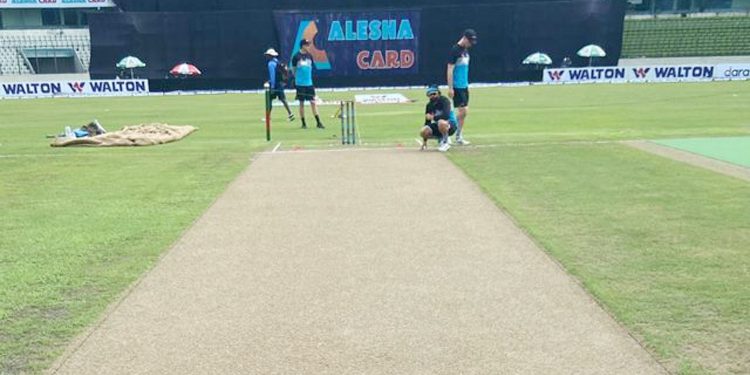Officials from the Bangladesh Cricket Board, or BCB, were not thrilled with the pitch’s slow bounce and low bounce at the Shere Bangla National Cricket Stadium in Mirpur. To keep the pitch lively and up to the standards the BCB aspires to, some improvements would need to be made, according to a statement released on Friday, August 1 by Nazmul Abedin, president of cricket operations for the board.
Although Abedin acknowledged that the cricketing schedule at the site is typically crowded, leaving little to no time for the modifications to take place, he said that the pitch curators and ground authorities at the Mirpur venue have not been able to maintain the pitch up to the standards. But according to Abedin, the board will make every effort to make time so that the wicket may be renovated to meet international standards.
“Overall, the Mirpur wicket is not satisfactory – we all accept that. We’ll have to work on this going forward. Perhaps the entire soil base will have to be removed. Or, the process through which the pitch is prepared will have to be changed. I hope that some changes will come in this area in the near future, and that we’ll see a better wicket in Mirpur,” Abedin said as quoted by Cricbuzz.
“If there had been grass on the wicket, then the ball’s colour might not have been damaged as much. Since there is no natural grass, when the ball comes into friction with the soil, it absorbs the colour of that soil, and eventually, a time comes when the ball appears less white and takes on a darker shade. That naturally affects visibility. So that is definitely a factor. Our board president made a correct observation or comment (in this regard),” he added.
Low, sluggish wickets were never desired by BCB.
The head of cricket operations also acknowledged that the ground authorities ultimately have the authority to guarantee the pitch’s preparedness and that the board is not ultimately responsible for this. Additionally, he stated that the Bangladesh Cricket Board has never requested that a low or slow surface be prepared, but whenever they have, the need for a bouncy wicket has ultimately not been fulfilled.
“I think there was an attempt to make it sporting, but they couldn’t do it, That responsibility lies with those who are in charge of preparing it. Because from our side—from the board’s side—I don’t think it was ever instructed that the wicket has to be low and slow. We’ve seen that whenever we wanted a better wicket, a bouncy wicket, often that didn’t happen. The usual reasons that are given relate to the nature of the soil there, or the environment, or the fact that too many matches are played on that pitch,” he said further.







